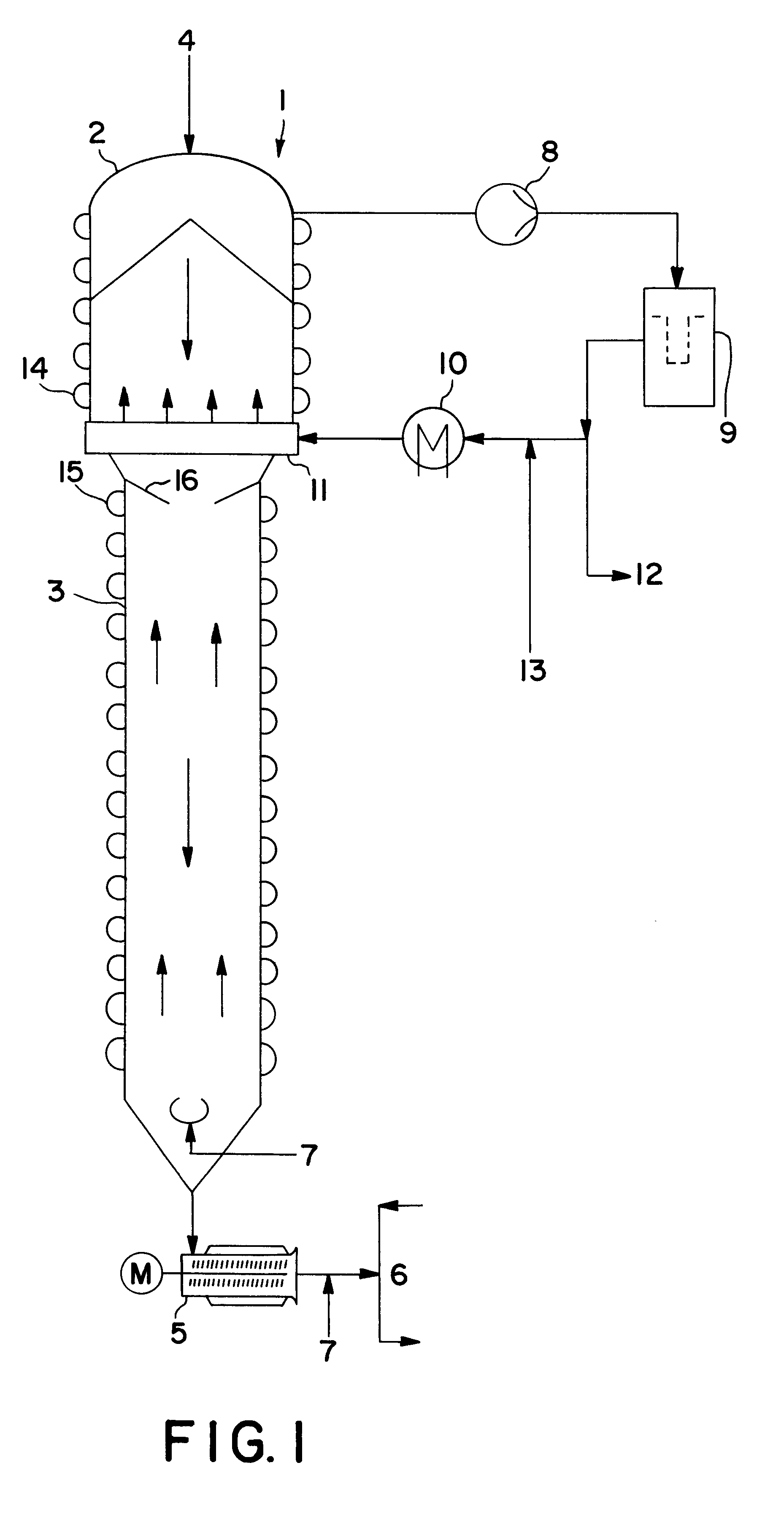Continuous polyamide extraction process
a polyamide and extraction process technology, applied in the direction of coatings, etc., can solve the problems of difficult to achieve the present-day requirement of residual extractable contents 0.5%, stickiness of chips, and low equipment height,
- Summary
- Abstract
- Description
- Claims
- Application Information
AI Technical Summary
Benefits of technology
Problems solved by technology
Method used
Image
Examples
##ventive example 1
Inventive Example 1
An extraction column 1 as per the Figure has a first zone 2 4500 mm in length and 147 mm in diameter and a second zone 3 23000 mm in length and 113 mm in diameter. 20 kg / h of unextracted nylon 6 chips 4 are introduced continuously into said first zone 2. 20 kg / h of fresh water 7 at 104.degree. C. are continuously introduced into the base of extractor 1. In said first zone 2 0.2 m.sup.3 / h of wash water are removed using a recirculating pump 8 and, after passage through a filter means 9 and a heat exchanger 10, reintroduced into said extractor 1 via an annular nozzle or perforated plate 11, situated 4400 mm below the water surface. The temperature in said first zone 2 is set at 121.degree. C. via said heat exchanger 10. 3.3 kg / h of liquid caprolactam 13 are metered into is the extractant circuit upstream of the heat exchanger to maintain a caprolactam concentration of about 20% in said first zone 2. Underneath the extractor head there is situated a flow barrier 16 ...
##ventive example 2
Inventive Example 2
Inventive Example 1 is repeated, except that 16 kg / h, instead of 20 kg / h, of fresh water are fed in at the base of the extractor at 104.degree. C. and 2.3 kg / h instead of 3.3 kg / h of liquid caprolactam are metered into the header circuit. This corresponds to a water / chips ratio of 0.8. The nylon 6 chips obtained have a residual extractables content of 0.4% and a dimer content of 0.05%.
##ventive example 3
Inventive Example 3
Unextracted nylon 6 chips having an average chip weight of 6.5 mg and a cylindrical shape are used under the same conditions as in Inventive Example 1. The discharged nylon 6 chips have a residual extractables content of 0.15% and a dimer content of less than 0.008%.
If desired, the polyamide can be further purified by known processes, for example in a simultaneous extraction and tempering as described in EP 0 284 968.
PUM
| Property | Measurement | Unit |
|---|---|---|
| Temperature | aaaaa | aaaaa |
| Time | aaaaa | aaaaa |
| Time | aaaaa | aaaaa |
Abstract
Description
Claims
Application Information
 Login to View More
Login to View More - R&D
- Intellectual Property
- Life Sciences
- Materials
- Tech Scout
- Unparalleled Data Quality
- Higher Quality Content
- 60% Fewer Hallucinations
Browse by: Latest US Patents, China's latest patents, Technical Efficacy Thesaurus, Application Domain, Technology Topic, Popular Technical Reports.
© 2025 PatSnap. All rights reserved.Legal|Privacy policy|Modern Slavery Act Transparency Statement|Sitemap|About US| Contact US: help@patsnap.com

